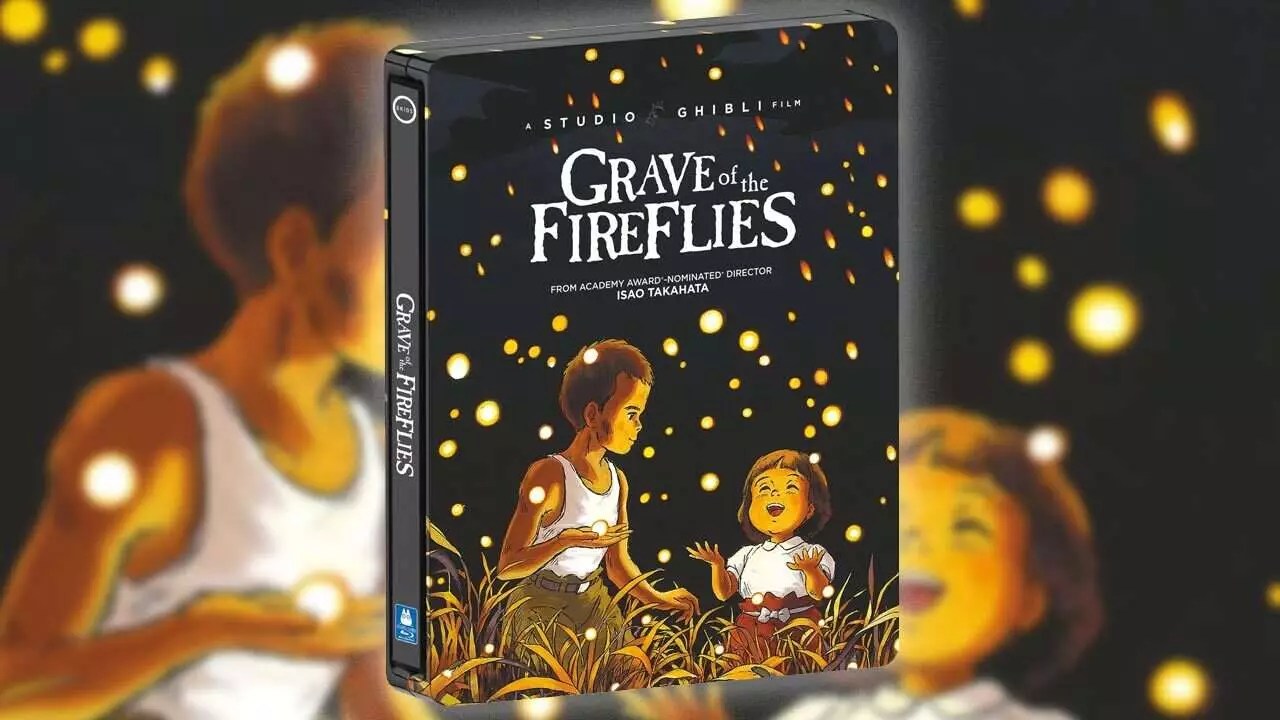In an era dominated by streaming services and digital downloads, the allure of owning physical copies of films persists—particularly for aficionados of cinema and animation. Limited edition steelbooks, in particular, have become a symbol of passion, craftsmanship, and collector’s pride. The recent surge in sales for Studio Ghibli’s classic, Grave of the Fireflies, exemplifies this phenomenon. Priced at just $19.67 on Amazon—a noticeable reduction from its original $27—this offer highlights not just affordability but also the deep connection audiences maintain with tangible media. Such editions transcend mere functionality; they embody the history, artistry, and emotional depth of the films they house.
The value of owning a steelbook goes beyond convenience. These cases, often featuring exquisite artwork and thoughtful designs, serve as a tribute to the films’ cultural significance. In the case of Grave of the Fireflies, a film that confronts viewers with the unflinching realities of war, the packaging becomes a vessel for its profound message. The physicality of a steelbook instills a sense of permanence, warnings against the disposable nature of digital files. For collectors and emotional viewers alike, these editions offer a way to preserve and honor a piece of cinematic history.
Grave of the Fireflies: An Uncompromising Reflection on War’s Harsh Realities
Unlike most films from Studio Ghibli, which often prioritize fantasy, environmental themes, and childhood innocence, Grave of the Fireflies ventures into darker, more political terrain. Based on real accounts, it narrates the suffering of two orphaned siblings during the devastation of World War II Japan. Its honest portrayal of hunger, loss, and societal indifference strips away any romanticism often associated with animated films, making it a visceral and emotionally challenging experience.
Despite its grim subject matter, the film resonates with viewers worldwide because it refuses to shy away from the brutality of war. Director Isao Takahata’s storytelling reveals the fragile beauty of human resilience amidst despair. While it’s rated PG-13 due to graphic content, the film doesn’t rely on violence for shock value; instead, it humanizes suffering, creating an intimate lens through which survivors’ stories are told. This facet of the film underscores the importance of documenting history, even when the material is uncomfortable or unsettling.
Moreover, the film’s recent home media release, including the limited edition steelbook, signifies a recognition that history’s lessons must be preserved in as many formats as possible. Extras such as storyboards, deleted scenes, interviews, and galleries deepen understanding and appreciation, confirming that Grave of the Fireflies is more than entertainment—it’s an educational artifact. Its inclusion of commentary devices and behind-the-scenes insights positions it as a pedagogical tool for understanding wartime atrocities and emotional trauma.
Collecting as a Cultural Statement
Buying a steelbook edition isn’t merely a transaction; it’s an act of cultural preservation. As editions go out of print, each physical copy becomes increasingly valuable—both monetarily and sentimentally. The 2012 release of Grave of the Fireflies, for example, has become a collector’s item, now out of print and highly sought after. The current re-release, with its more modern, striking case design, connects new generations to the film’s enduring relevance, making it accessible for contemporary audiences.
In contrast to lighter, more whimsical Studio Ghibli films like Spirited Away or Kiki’s Delivery Service, Grave of the Fireflies demands a different kind of engagement. It challenges viewers emotionally and intellectually, demanding empathy and reflection. Owning a well-designed collector’s edition reinforces one’s dedication to confronting important issues—history, human suffering, and the resilience of the human spirit. These physical editions also serve as a statement that some films—regardless of their commercial appeal—deserve to be preserved and appreciated as works of art and historical record.
Furthermore, the trend toward comprehensive collector’s sets, including hardcover art books and all-in-one editions, signals a shift toward appreciating animation not just as entertainment but as a form of high art. The recent publication of visual collections and story retrospectives for Miyazaki’s classics demonstrates how critical the preservation and celebration of animated history has become.
The Broader Cultural Context and Personal Reflection
The ongoing popularity of Ghibli steelbooks and collector’s editions reflects a deeper cultural yearning for authenticity, nostalgia, and meaningful storytelling. In a cluttered digital landscape, physical media offers a tactile, contemplative experience that screens cannot replace. The importance of owning a high-quality, beautifully packaged edition like Grave of the Fireflies’ steelbook lies in both aesthetic appreciation and in the act of remembrance.
Personally, I see these editions as vital cultural artifacts. They challenge the often transient nature of digital content and elevate the experience from passive consumption to active participation. The stories behind these films, especially ones as potent and personal as Grave of the Fireflies, demand that we approach them with reverence. The limited editions, with their intricate artwork and plentiful extras, serve as a reminder that movies are more than just fleeting entertainment—they are woven into the fabric of our history and collective memory.
As the market for collector’s editions expands, I believe it signifies a cultural shift toward valuing quality, craftsmanship, and historical consciousness in media consumption. While digital convenience is undeniable, owning a physical, collectible edition makes a statement: some stories are worth safeguarding, not just for their narrative, but for their ability to teach, inspire, and evoke emotion long after the screen goes dark.


Leave a Reply